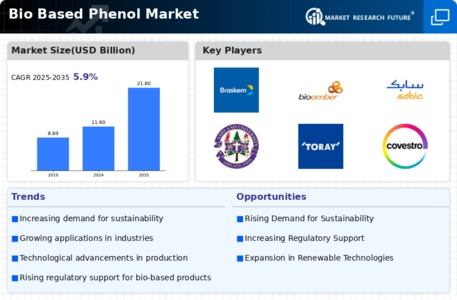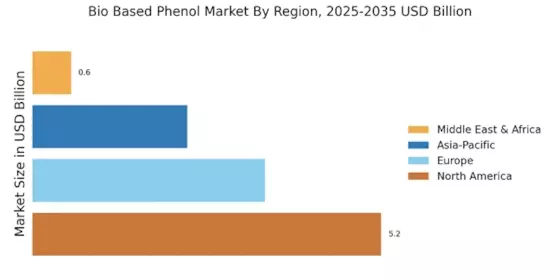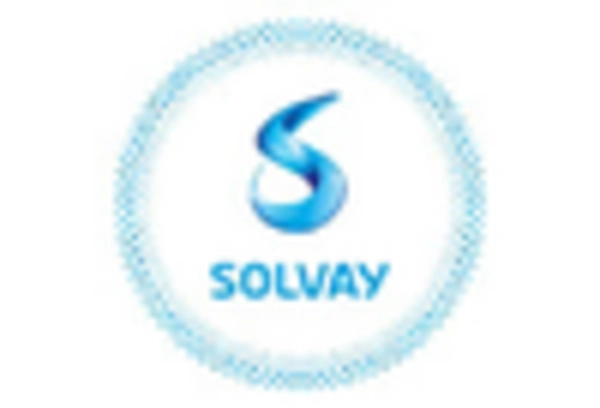Technological Innovations
Technological innovations play a crucial role in shaping the Bio Based Phenol Market. Advances in production processes, such as the development of more efficient catalytic methods and fermentation technologies, are enhancing the feasibility and cost-effectiveness of bio-based phenol production. These innovations are enabling manufacturers to produce bio-based phenol at a competitive price point, thereby increasing its attractiveness to various industries. Furthermore, research and development efforts are focused on improving the yield and purity of bio-based phenol, which could potentially expand its applications in diverse sectors. As a result, the Bio Based Phenol Market is likely to experience accelerated growth, driven by these technological advancements that facilitate the transition from traditional to bio-based materials.
Sustainability Regulations
The increasing emphasis on sustainability regulations is a pivotal driver for the Bio Based Phenol Market. Governments and regulatory bodies are implementing stringent policies aimed at reducing carbon footprints and promoting eco-friendly materials. This regulatory landscape encourages manufacturers to shift towards bio-based alternatives, including bio-based phenol, which is derived from renewable resources. As a result, the market is witnessing a surge in demand for bio-based phenol, as companies seek to comply with these regulations. In fact, the bio-based phenol market is projected to grow at a compound annual growth rate of approximately 8% over the next few years, reflecting the industry's response to sustainability mandates. This trend not only supports environmental goals but also opens new avenues for innovation within the Bio Based Phenol Market.
Collaboration and Partnerships
Collaboration and partnerships among stakeholders are increasingly driving the Bio Based Phenol Market. Companies are recognizing the value of strategic alliances to enhance their capabilities in bio-based product development. By collaborating with research institutions, technology providers, and other industry players, companies can leverage shared expertise and resources to accelerate innovation in bio-based phenol production. These partnerships are crucial for overcoming technical challenges and optimizing production processes. Moreover, joint ventures can facilitate access to new markets and distribution channels, thereby expanding the reach of bio-based phenol products. As the Bio Based Phenol Market continues to evolve, such collaborative efforts are likely to play a vital role in shaping its future trajectory.
Investment in Renewable Resources
Investment in renewable resources is emerging as a significant driver for the Bio Based Phenol Market. As industries seek to diversify their raw material sources and reduce dependency on fossil fuels, there is a marked shift towards renewable feedstocks for phenol production. This trend is supported by both private and public sector investments aimed at developing sustainable supply chains. The bio-based phenol market is expected to benefit from these investments, as they facilitate the establishment of new production facilities and enhance the overall capacity for bio-based phenol manufacturing. Market analysts suggest that this influx of capital could lead to a more robust and resilient Bio Based Phenol Market, fostering innovation and expanding market reach.
Rising Demand for Eco-Friendly Products
The growing consumer preference for eco-friendly products is significantly influencing the Bio Based Phenol Market. As awareness of environmental issues increases, consumers are actively seeking products that are sustainable and have a lower environmental impact. This shift in consumer behavior is prompting manufacturers to explore bio-based alternatives, including bio-based phenol, which is perceived as a greener option compared to traditional petrochemical-derived phenol. Market data indicates that the demand for bio-based phenol is expected to rise, driven by sectors such as automotive, construction, and packaging, where eco-friendly materials are increasingly favored. This trend not only enhances brand reputation but also aligns with the broader sustainability goals of companies operating within the Bio Based Phenol Market.


















Leave a Comment